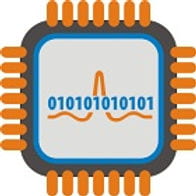Ultra-Wideband Time-Stretched Digitizer
fluorescence microscopy. The goal of this research is to use photonics to extend the capabilities of electronics to meet these demands. This is achieved by photonic time-stretch technology, which uses photonics to slow down electrical signals in time. Hence, an electronic digitizer that would have been too slow to capture the original electrical signal can now capture the stretched and slowed down signal. We have a world record for analog-to-digital conversion rate.
[2] J. Chou, O. Boyraz, D. R. Solli, and B. Jalali, “Femtosecond real-time single-shot digitizer,” Applied Physics Letters 91, 161105 (2007)
[3] Y. Han, O. Boyraz, and B. Jalali, “Tera-sample-per-second real-time waveform digitizer,” Applied Physics Letters 87, 241116 (2005)
[4] F. Coppinger, A. S. Bhushan, and B. Jalali, “Photonic time stretch and its application to analog-to-digital conversion,” IEEE Transactions on Microwave Theory and Techniques 47, 1309 (1999)





